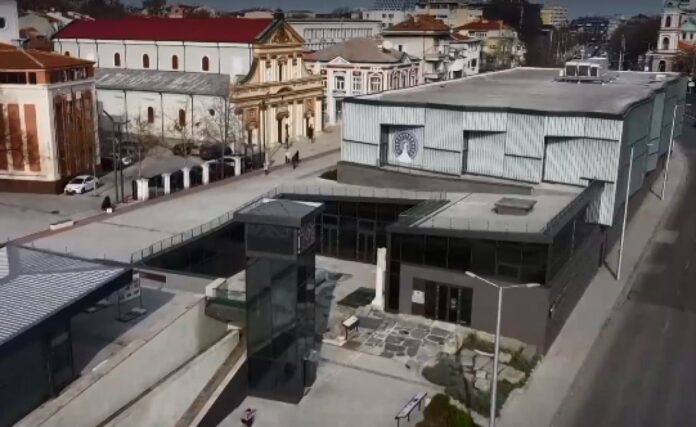
In the heart of Bulgaria lies a historical gem that has recently captivated the world’s attention.
Plovdiv, a city steeped in ancient history, has unveiled its newest archaeological jewel, the complex of early Christian basilicas and ancient buildings showcasing the mosaic heritage of Ancient Philippopolis.
This remarkable site has been heralded as one of the most desired and visited tourist places in Bulgaria, earning its rightful place among the Hundred National Tourist Sites.
Since its inauguration three years ago, this complex has welcomed over 130 thousand visitors, with an impressive array of nationalities gracing its ancient halls.
Among them, the French, Spanish, and Germans have been the most numerous, drawn by the allure of Plovdiv’s rich history and cultural heritage.
At the helm of this cultural revival stands Prof. Dr. Elena Kantareva, the director of OI “Ancient Plovdiv,” who elucidates on the uniqueness of this site.
“One floor alone has over 2,000 square meters of mosaics,” she explains, highlighting the grandeur of the large early Christian basilica.
“It is the largest surviving ancient mosaic from a single object,” she adds, emphasizing the unparalleled magnificence of Plovdiv’s mosaic heritage.
The mosaic floors of the basilica, meticulously restored over the last decade under the stewardship of Dimitar Stanchev, head of the “Preservation of Immovable Cultural Heritage” department, depict over 100 birds, with a magnificent peacock adorning the central entrance.
Stanchev’s dedication to restoring these masterpieces is evident, as he details the extensive research conducted to trace the origins of each tesserae, sourcing stones from regions across Bulgaria.
The symbolism embedded within these mosaics speaks volumes about the intersection of pagan and Christian ideologies.
“The peacock symbolized immortality – a pagan idea that the early Christians adopted,” explains Stanchev, shedding light on the intricate layers of history preserved within the basilica’s walls.
As Bulgaria seeks to showcase its rich cultural tapestry to the world, initiatives like the “Know Bulgaria” movement have gained momentum.
Tourists, eager to delve into the country’s heritage, flock to museums and galleries where the past intertwines seamlessly with modern technologies.
Plovdiv’s basilica stands as a shining example of this synthesis, offering visitors a glimpse into the ancient past through innovative exhibits and interactive displays.
From next month onwards, enthusiasts of the “Know Bulgaria” movement will have the opportunity to collect stamps in their tourist books and receive a certificate adorned with the basilica’s illustrious façade.
This initiative marks the basilica’s inclusion in the national cultural route, further solidifying its status as a must-visit destination for cultural enthusiasts.
Looking ahead, Plovdiv’s basilica is poised to make its mark on the global stage, with plans underway to submit preliminary assessment documents to UNESCO for consideration as a World Heritage Site.
Assoc. Dr. Elena Kantareva outlines the rigorous procedure involved, expressing hope for a successful inclusion in the prestigious list.
Among the constellation of new sites that have graced Bulgaria’s Hundred National Tourist Sites, Plovdiv’s basilica shines brightest, a testament to the country’s rich cultural heritage and unwavering commitment to preserving its past for future generations.
As the world turns its gaze towards this ancient marvel, Plovdiv stands poised to take its place among the pantheon of UNESCO World Heritage Sites, securing its legacy for generations to come.
This article was created using automation technology and was thoroughly edited and fact-checked by one of our editorial staff members
